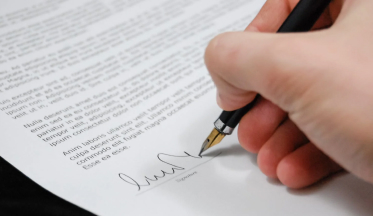Have Questions? Contact Us.
Since its inception, NYCLA has been at the forefront of most legal debates in the country. We have provided legal education for more than 40 years.
Honorable John P. Asiello
Clerk of the Court
New York Court of Appeals
20 Eagle Street
Albany, New York 12207
Your Honor:
The New York County Lawyer’s Association Appellate Courts Committee analyzes the state and federal appellate court system with an eye towards reform. We write with a proposal for reform of the rules governing the service of materials submitted in support of leave applications: the Court of Appeals should permit electronic service in lieu of mail service.
As Chief Judge DiFiore recently explained, “The benefits of going all-digital are obvious and significant. It streamlines the commencement of cases, resulting in substantial cost savings for all litigants.” Replacing the current system with an e- service system would significantly enhance the efficiency of the leave-application process, promote environmental responsibility, and save money.
From 2012 through 2016 alone, the Court of Appeals disposed of more than 10,000 criminal-leave applications and nearly 5,000 civil motions for leave to appeal. In the typical application, numerous documents must be filed. In a criminal case, Appellant must file an opening letter (attaching the Appellate Division briefs and decisions) and often files a substantive follow-up letter (once a Judge is assigned to the application). In turn, the Respondent files a letter in opposition.
In civil cases, the party seeking permission to appeal must file even more materials:
an original and six copies of consolidated motion papers including, among other things, a notice of motion, statement of case history, a jurisdictional showing, statement of the questions presented, a showing of leaveworthiness, and a copy of the order/judgment sought to be appealed;
a copy of the record or appendix in the court below;
copies of each party’s briefs below.
The opposing party may then file six copies of papers in opposition, setting forth reasons for dismissal or denial of the application.
The end result is that each year, hundreds of thousands of pages are copied/printed, mailed, filed, and stored. It is also likely that at least $100,000 per year is spent on the mailing and printing of documents—a tab that is often picked up by the taxpayer, as most leave applications are filed and opposed by tax-payer funded agencies/firms.
An e-service system would facilitate the work of the Court and the parties. Parties could electronically file the papers on an internal court database or the parties could simply email the papers to designated email addresses. For instance, the Court could designate an email address for opening criminal leave applications and for each Judge, and also designate a centralized email address for civil leave applications. Each email address could, upon receipt, send confirmation to the parties that the papers have been received and filed.
Given the significant benefits of an e-filing system, and its likely attractiveness to litigants, the Court should amend its rules to make e-service an option for litigants seeking permission to appeal.
We welcome the opportunity to discuss this proposal with you further.
Very truly yours,

Matthew Bova and Scott Danner,
Co-Chairs, Appellate Courts Committee
Footnotes
14 Vesey Street, New York, NY 10007 ● Tel. 212-267-6646 ● Fax: 212-406-9252 ● www.nycla.org
